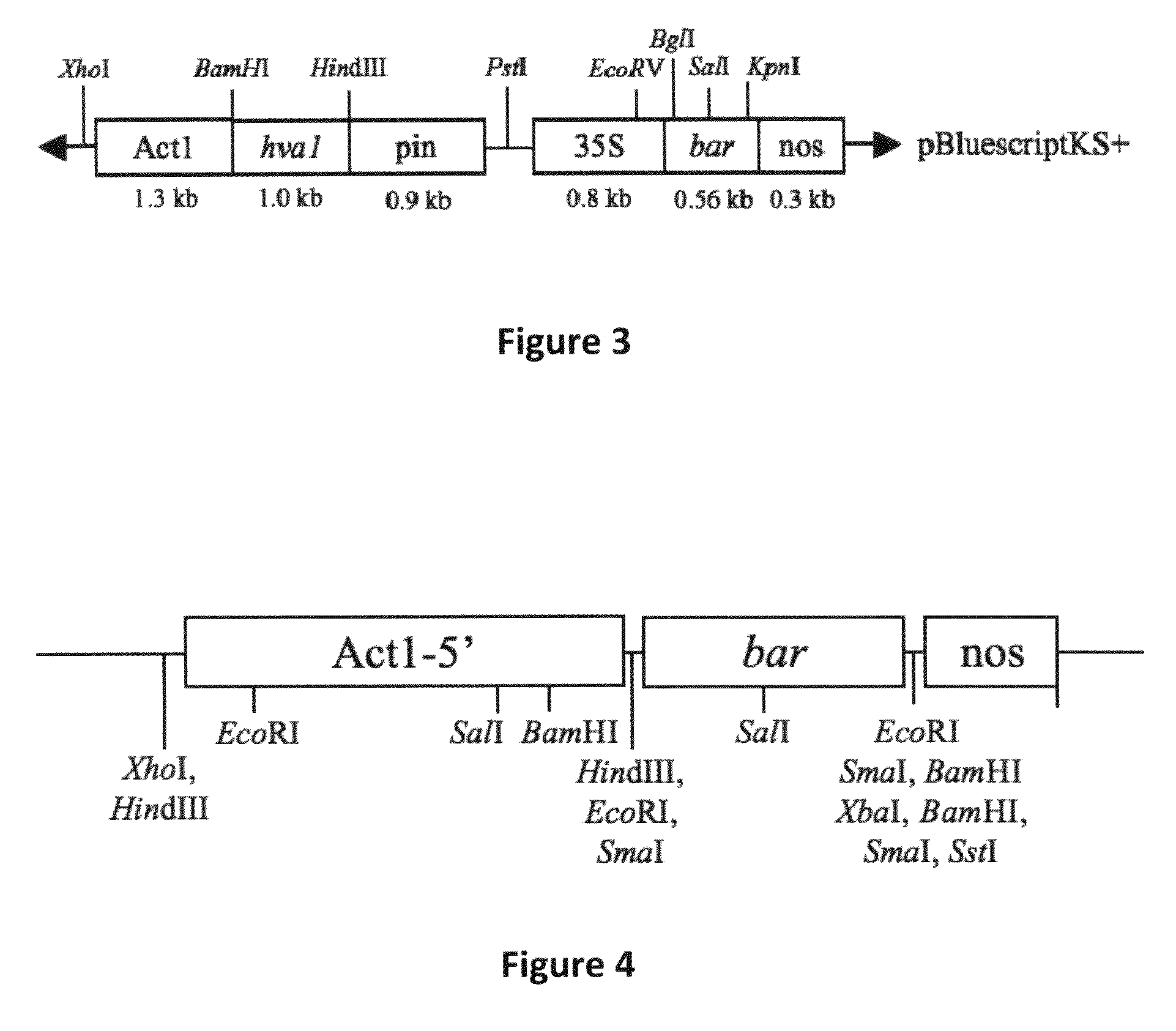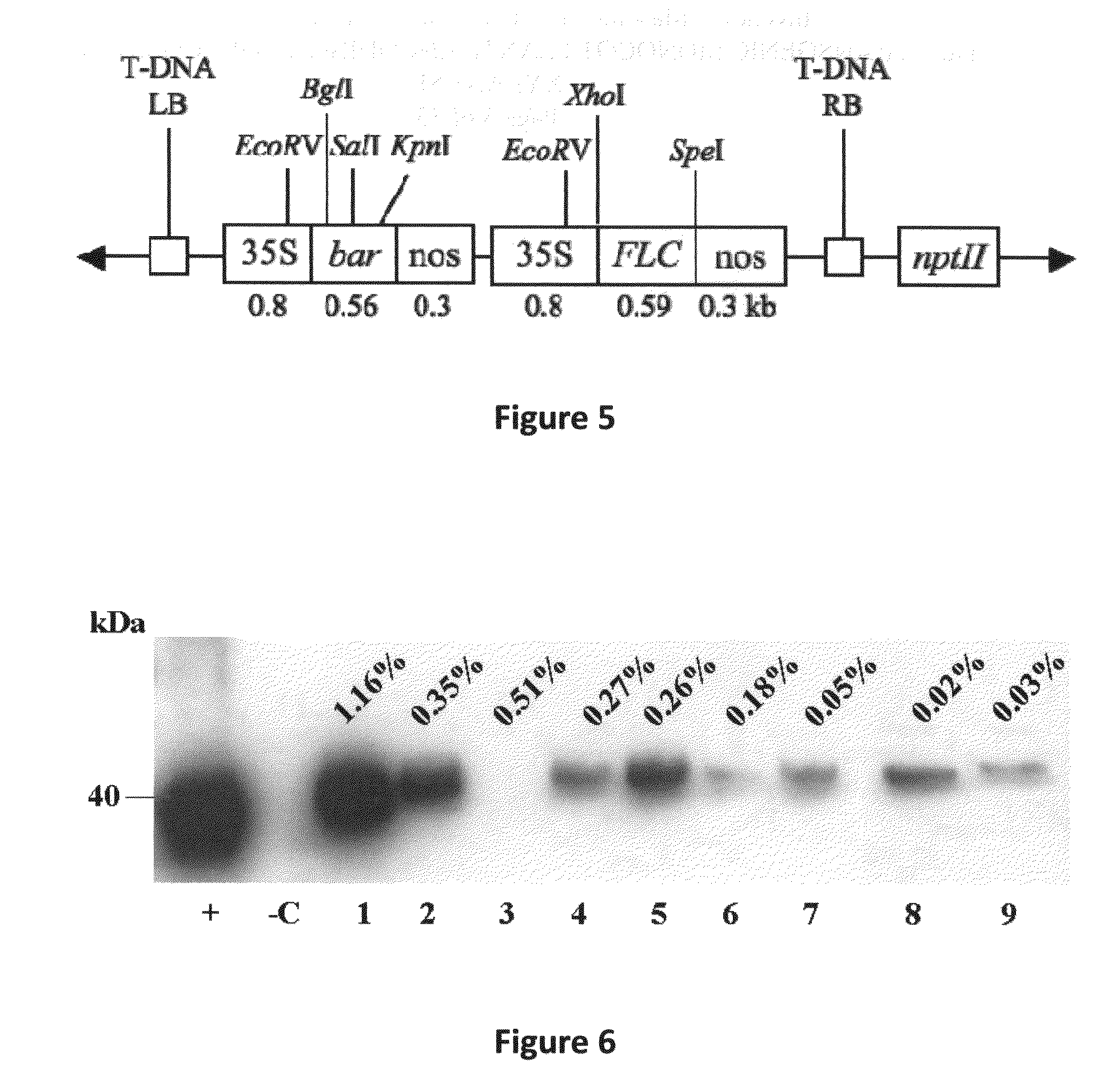Transgenic monocot plants encoding beta-glucosidase and xylanase
a technology of beta-glucosidase and xylanase, which is applied in the field of transgenic monocot plants encoding beta-glucosidase and xylanase, can solve the problems of high cost of enzymes and pretreatment, roadblocks stand, and eventually depletion
- Summary
- Abstract
- Description
- Claims
- Application Information
AI Technical Summary
Benefits of technology
Problems solved by technology
Method used
Image
Examples
examples
II. Materials and Methods
1. Transformation Vectors
1.1 Genes of Interest
[0129]pMZ766-E1CAT. Vector pMZ766-E1CAT (Ziegler et al. 2000) encodes the catalytic domain of endo-1,4-β-glucanase E1 from A. cellulolyticus, targeted to the apoplast with the signal peptide from tobacco pathogenesis-related protein 1a (Pr1a), under regulation of the CaMV 35S promoter, the tobacco mosaic virus translational enhancer (Ω), and the polyadenylation signal from the nopaline synthase gene (3′ nos) (FIG. 1).
[0130]pUC1813. Vector pUC1813 (Yao 2004) contains the Cauliflower Mosaic Virus (CaMV) 35S promoter, endoplasmic-reticulum leading sequence (ER); bglA gene encoding Butyrivibrio fibrisolvens H17c β-glucosidase, a vacuole-targeting sequence (VT) and the CaMV 35S terminator (FIG. 2).
1.2 Selectable Markers
[0131]pBY520. Vector pBY520 (Xu et al. 1996) contains the barley HVA1 coding sequence regulated by the rice actin 1 (Act1) promoter and potato proteinase inhibitor II (pinII) terminator, as well as the ...
PUM
| Property | Measurement | Unit |
|---|---|---|
| diameter | aaaaa | aaaaa |
| height | aaaaa | aaaaa |
| volume | aaaaa | aaaaa |
Abstract
Description
Claims
Application Information
 Login to View More
Login to View More - R&D
- Intellectual Property
- Life Sciences
- Materials
- Tech Scout
- Unparalleled Data Quality
- Higher Quality Content
- 60% Fewer Hallucinations
Browse by: Latest US Patents, China's latest patents, Technical Efficacy Thesaurus, Application Domain, Technology Topic, Popular Technical Reports.
© 2025 PatSnap. All rights reserved.Legal|Privacy policy|Modern Slavery Act Transparency Statement|Sitemap|About US| Contact US: help@patsnap.com



